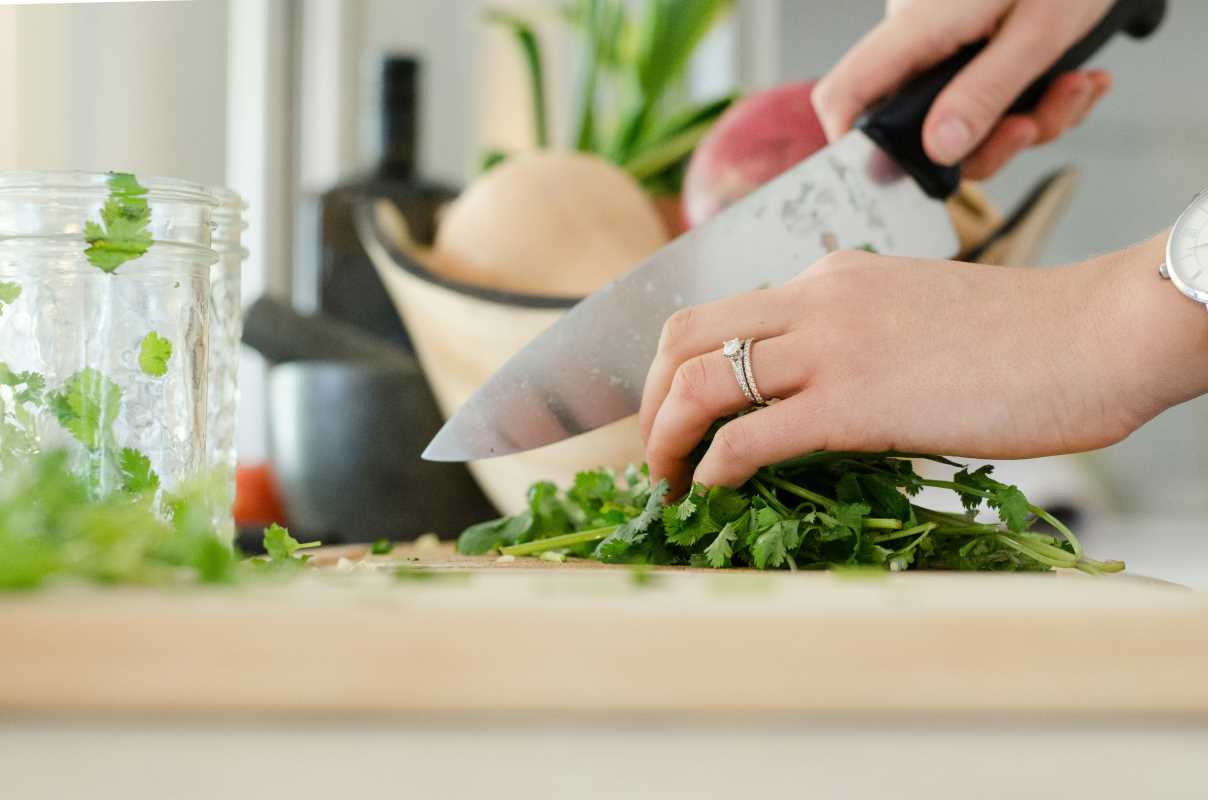Cooking isn’t just a necessity; it’s an art, a science, and often a source of joy. Among the various cooking techniques, low-heat cooking stands out for its ability to preserve nutrients, enhance flavors, and create dishes with exquisite textures. While it may require a bit more patience, the rewards are well worth it. From tender slow-roasted meats to delicately poached fish, low-heat cooking opens up a world of sumptuous possibilities when done right. Here’s a guide to mastering this technique and turning simple ingredients into mouthwatering dishes.
Why Low-Heat Cooking?
First, let’s understand the benefits of low-heat cooking and why it’s worth the extra effort. Cooking at lower temperatures gently coaxes the flavors out of ingredients. This method allows food to cook evenly, preventing it from drying out or becoming overcooked. For health-conscious cooks, low-heat methods such as poaching, simmering, or steaming retain more nutrients compared to high-heat techniques like frying or grilling.
By using lower temperatures, you also reduce the risk of burning or caramelizing oils and fats, which can produce harmful compounds. But beyond the health benefits, the real treasure lies in the taste. With patience, low-heat cooking unlocks deep, nuanced flavors that can transform your meals.
The Tools of the Trade
Before we get into specific techniques, it’s important to have the right tools at your disposal. Low-heat cooking often relies on precision and control, so tools like a quality slow cooker, Dutch oven, or heavy-bottomed pan will make a big difference. A good thermometer is also key, helping you keep a steady temperature for dishes like braises or slow-cooked roasts. If you’re cooking sous vide, an immersion circulator is a must-have.
Now, onto the techniques and tips to make low-heat cooking truly delicious.
1. Use Spices and Herbs to Elevate Flavor
Low-heat cooking gives spices and herbs the perfect environment to meld and release their essence slowly, infusing your dish with layers of flavor. Because the cooking process is gradual, the heat doesn’t dull the vibrant notes of fresh herbs or overpower the aromatic qualities of spices.
Tips:
- Bloom Spices First: Before simmering or slow-cooking, lightly toast your spices in a bit of oil over low heat to release their natural oils and amplify their aroma. For instance, cumin, coriander, or mustard seeds benefit greatly from this step.
- Timing Matters: Robust, woody herbs like rosemary or thyme can go in at the beginning of cooking, but delicate fresh herbs like parsley or basil should be added in the final minutes to retain their bright flavors.
- Make a Bouquet Garni: This is a bundle of fresh herbs tied together or wrapped in cheesecloth and submerged into pots of stock, stews, or poaching liquids. It’s an easy way to add depth of flavor without leaving herb bits in the finished dish.
- Example Dish: A slow-simmered tomato sauce with garlic, fresh oregano, basil, and a pinch of chili flakes is a great demonstration of how low heat can amplify aromatics.
2. Master the Art of Marinades
Marinades are your secret weapon in low-heat cooking. Since this technique doesn’t rely on searing, marinades can impart the intensity of flavor that low heat pulls all the way through the dish.
Tips:
- Balance Flavors: Aim for a balance between acid (like vinegar, citrus juice, or wine), fat (olive oil, coconut milk), and aromatics (garlic, ginger, spices). This trio enhances the flavors of meat, fish, or even vegetables.
- Marinate for Longer: Because low-heat cooking often involves tender proteins like chicken or fish, marinating overnight ensures that the flavors penetrate and enhance every bite.
- Don’t Skip a Glaze: After marinating, brushing a glaze during cooking can add a touch of stickiness and intensified flavor. A slightly sweet glaze, such as one made from honey or balsamic reduction, is perfect for slow roasting.
- Example Dish: Try marinated slow-roasted chicken thighs with a mixture of soy sauce, garlic, ginger, and smoked paprika. Low heat ensures they cook to a perfect tenderness without drying out.
3. Perfecting Slow Roasting
Slow roasting is ideal for meats, hearty vegetables, or even fruits. Cooking at temperatures between 250°F and 325°F gently breaks down proteins, softens tough fibers, and locks in moisture.
Tips:
- Preheat and Season Well: Start with a preheated oven and don’t forget to season your protein or vegetables generously. Salt can penetrate the food more deeply during a long cook time.
- Use Liquid Wisely: Adding broth, wine, or water to the bottom of a roasting pan prevents food from drying and creates a flavorful base for sauces.
- Low and Slow: It’s all about patience here. For example, a rack of lamb roasted at 275°F will cook more evenly and yield a juicier texture than one blasted at high heat.
- Example Dish: Roasting a pork shoulder at 300°F for several hours creates tender, pull-apart meat rich with natural juices, perfect for tacos or sandwiches.
4. Gentle Simmering for Soups and Stews
Simmering at a low, steady bubble ensures soups and stews develop rich, layered flavors without turning the ingredients into mush. The key is to keep the pot barely simmering, with small, gentle bubbles instead of a rolling boil.
Tips:
- Start with a Flavorful Base: Build layers of flavor by sautéing onions, garlic, and spices before adding liquids.
- Monitor Liquids: Avoid overcooking vegetables by adding them to the simmering pot based on their cooking times. Root vegetables go in first, while softer ingredients like zucchini or peas should be added near the end.
- Deglaze: If cooking meats for your stew, deglaze the pan with wine or stock after browning. This picks up the browned bits, which are flavor gold.
- Example Dish: A hearty beef stew simmered with carrots, potatoes, and red wine over a few hours becomes irresistibly rich.
5. Poaching for Delicate Dishes
Poaching is a gentle method ideal for proteins like fish, chicken, or even fruits. Cooking in just-simmering water (about 160°F-180°F) ensures that food stays moist and tender while retaining its natural flavor.
Tips:
- Aromatic Poaching Liquids: Flavor your water with aromatics like lemon, bay leaves, herbs, or broth for an additional layer of taste.
- Keep it Submerged: Ensure your food stays fully submerged in the liquid to cook evenly.
- Control the Heat: Poaching should never reach a boil—maintain the heat just below the boiling point for the best results.
- Example Dish: A poached salmon filet in a dill and lemon-infused broth is light, flavorful, and incredibly tender.
6. Enhancing Texture with Low Heat
Low-heat cooking isn’t just about taste—it’s about texture. The slow nature of the process transforms ingredients in ways high heat can’t. For instance:
- Slow Cooked Meats: Briskets, pork shoulders, and short ribs become super tender as collagen turns to gelatin.
- Perfect Grains: Cooking rice or quinoa at a low simmer ensures fluffy, perfectly cooked grains.
- Silky Custards: Low, gentle baking is the trick for setting custards like crème brûlée without curdling.
7. Patience Makes it Perfect
Low-heat cooking rewards patience. Unlike high-heat methods, which can be rushed, low-heat approaches thrive on gradual transformation. Allow the food to take its time; the flavors will intensify, and the textures improve. Use long cooking times as an opportunity to prepare side dishes, relax, or savor the meditative process of cooking.
Low-heat cooking is more than a technique; it’s a philosophy that invites you to slow down and enjoy both the process and the results. By mastering spices, marinades, and techniques like slow roasting, simmering, and poaching, you can turn humble ingredients into culinary masterpieces. With patience and care, low-heat cooking can deliver dishes that are not only nutritious but bursting with flavor and texture. Once you’ve mastered this, you’ll find that every meal becomes a celebration of simplicity and taste.
 (Image via
(Image via





